The first Round of 16 match at the FIFA Women’s World Cup 2019 will be the battle between Germany and Nigeria. Germany marched through the group stage with three wins over China, Spain and South Africa. Nigeria, on the other hand, could only win one of their group stage games against South Korea which was sufficient to qualify for the Round of 16 in the end.
From a tactical perspective, it will be a match between two sides with similar approaches. Although Germany will be the clear favourite, both teams deploy direct attacking approaches and like to attack down the wings. The following tactical preview analysis will deal with possible tactical strategies for either side.
Possible lineups and formations
While Germany started the tournament with a 4-1-4-1 formation, head-coach Voss-Tecklenburg had to change into a 4-4-2 system after the injury of playmaker Dzsenifer Marozsán. As Marozsán won’t recover in time for the Round of 16 match, Germany might stick to their 4-4-2 setup. However, it will be interesting which players will be lined up in central midfield since Voss-Tecklenburg has several options.
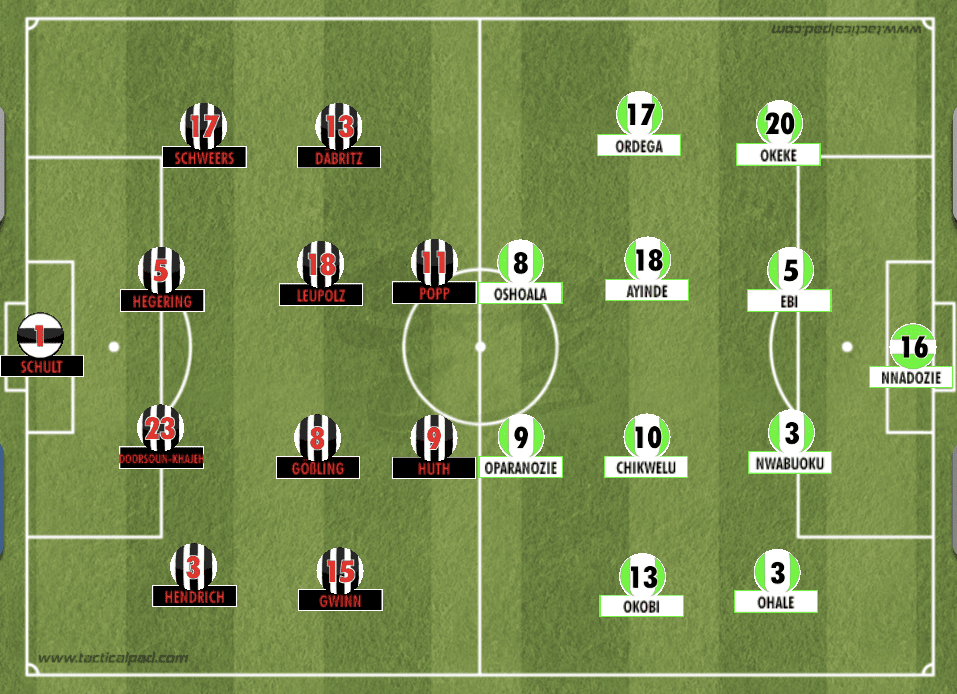
Nigeria already utilised several formations throughout the group stage. Whereas coach Thomas Dennerby always lined up a line of four in the back, the midfield setup differed from game to game. With 4-1-4-1, 4-2-3-1 and 4-4-2 as possible formations, Nigeria have got several opportunities to line up against Germany. However, it is quite likely that Nigeria will use a similar approach as in their match against France. In that game, the African champion utilised a 4-4-2 system when defending in a mid-block or low-block.
In the attack, former Liverpool player Asisat Oshoala and Desire Oparanozie will be tasked to threaten the German goal.
Pressing systems
Nigeria already showed different pressing systems throughout the tournament. Besides regular changes of formations, Nigeria also deployed both a high press and a mid-block as well as a low-block in the group stage games. Independent of the height of the press, Nigeria attempt to force the opposition towards the wing. In these areas, Dennerby’s side aim at utilising the sideline for their press and simultaneously keep their opponent far away from their own goal.
Against Germany, Nigeria will most likely press in a 4-4-2 mid-block which they already used against France.
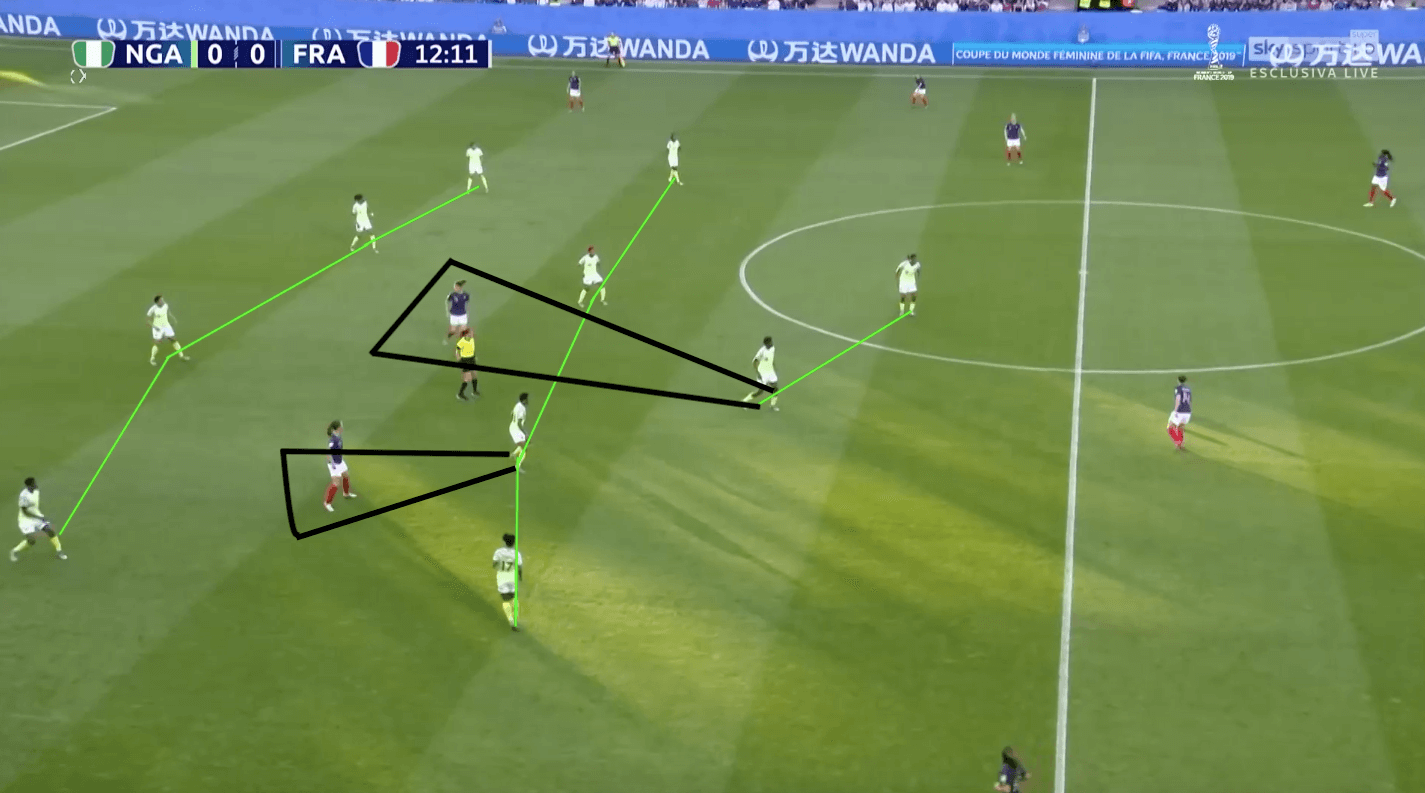
With this defensive setup, Nigeria is capable of avoiding threatening passes into areas between the lines. Once the ball is played towards the wing, full-back and winger both press to win the ball. Against France, this strategy was proven to be successful. However, France also played into Nigeria’s cards with a relatively slow ball circulation.
Germany always aim at pressing the opposition high up the pitch. With a 4-4-2 zonal defence, Voss-Tecklenburg’s team try to invite the opposition centre-backs to play towards the full-backs where they try to regain possession.
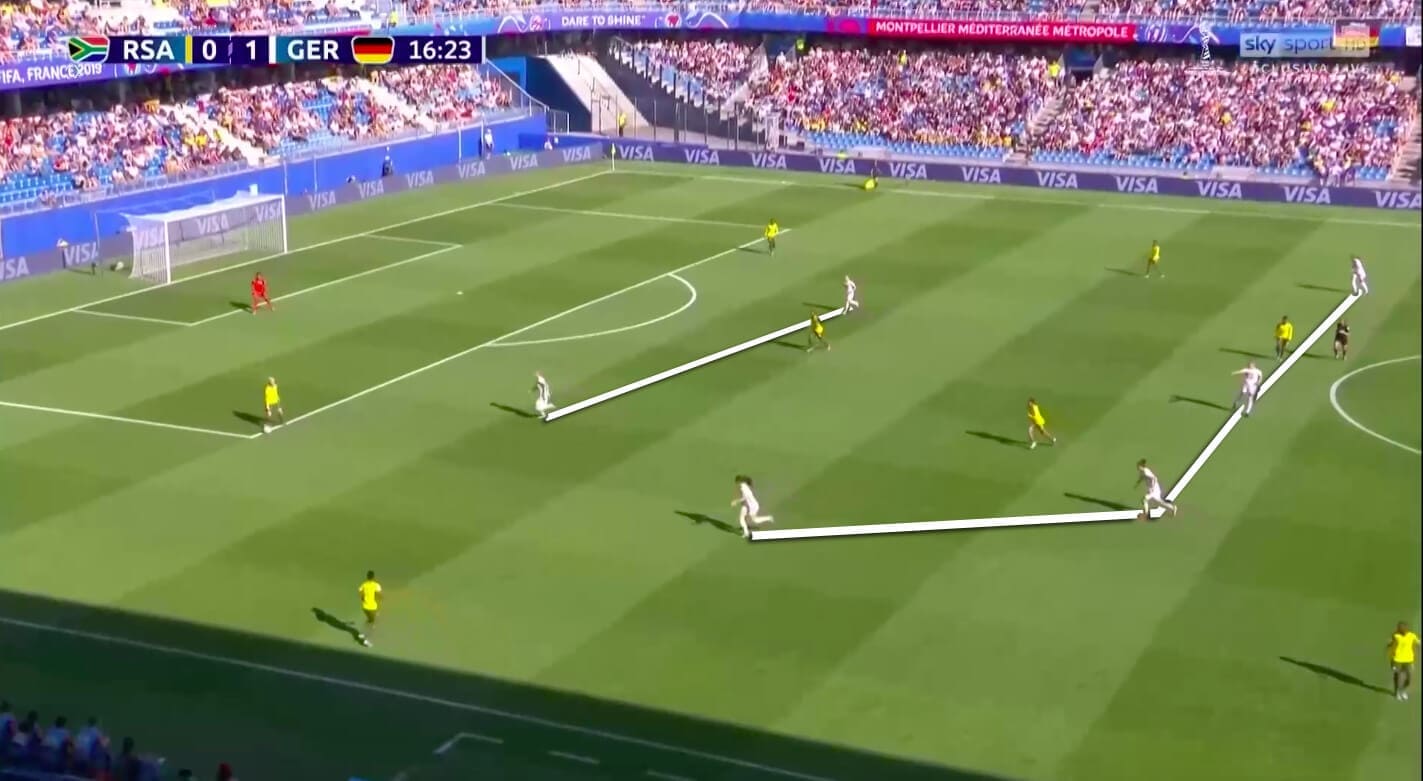
With this defensive concept, Germany have not conceded a single goal in the World Cup so far.
Threatening Nigerian counter-attacks?
Both teams preferred rather direct attacking approaches in the tournament so far. As a consequence, the match could offer many transition phases and therewith opportunities for counter-attacks. But since direct attacks usually provide less attacking personnel up front and more defensive cover, this does not militate for many promising counter-attacks as both sides would remain defensively solid.
Nevertheless, it is likely that Germany will be forced into longer possession phases as Nigeria might sit back as the underdog. One of Germany’s weak spots could be their defensive cover then. Voss-Tecklenburg’s side cover their attack with only three players. Their centre-back pairing and one of the defensive midfielders. With high full-backs, the Germany side lack defensive cover in wide areas though.
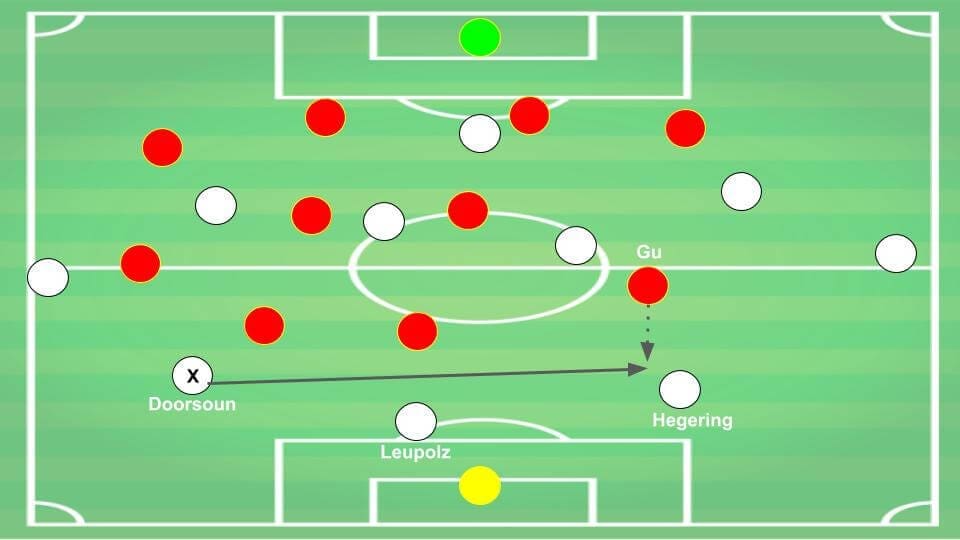
But after some initial struggles against China, Germany seemed more stable in transition moments lately.
In addition to that, Nigeria struggled to create chances from counter-attacks against France. That was due to the fact that their wingers were often pinned deep down in their own half. That often left only the two front players of their 4-4-2 in attacking positions.
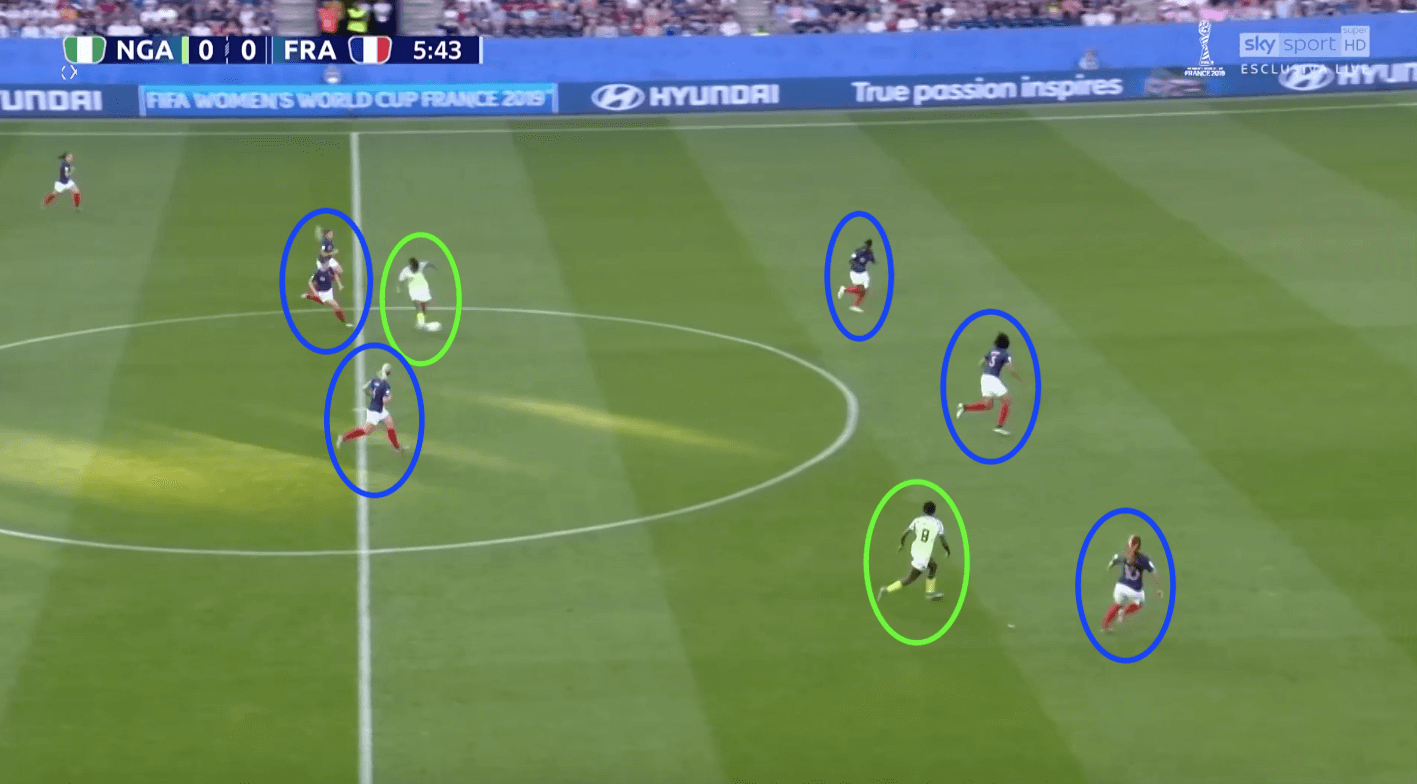
Being outnumbered by French defenders, the striking duo was incapable of threatening the opposition goal.
Germany’s attacking versatility
The German side have already proven their versatility in the attack.
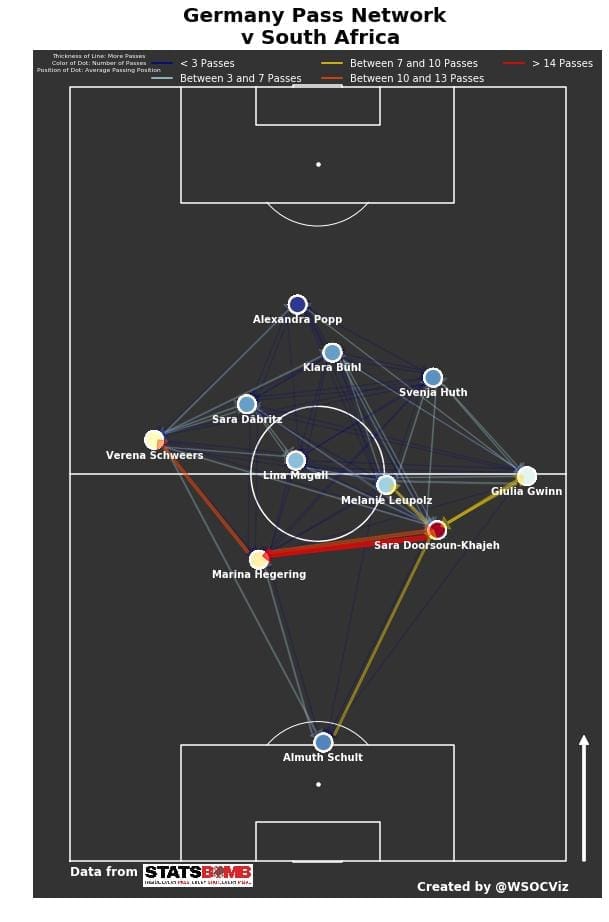
Midfielder Sara Däbritz lined up as a winger tucked inside and sometimes took up a central role in the match against South Africa. Therewith, Germany can ensure constant occupation of space between the lines. Moreover, the opposition full-back needs to either stay on her position and leave Däbritz unmarked or follow her and therewith offer space on the wing. That is where the German full-backs come into play. By providing width right-back and left-back always offer a wide passing option. With this setup, Germany can either play through the centre or half-spaces depending on the movement of their attacking department or play around the opposition block to put in crosses.
Nigeria will have to be very careful when Germany attempt to put in crosses for their attacker Alexandra Popp. Popp is a real threat in the air and already demonstrated her heading abilities with a goal against South Africa. Dennerby will need to make sure that his side do not allow Germany to get into crossing positions or at least block the crosses.
Nigeria’s wing-focused attacks
As for many sides at the FIFA Women’s World Cup 2019, Germany and Nigeria both like to attack down the flanks.
Nigeria prefer to put in crosses very early. Mostly they occupy the penalty area with two attackers plus the ball far winger. But as the central midfielders do not move up the pitch fast enough, Nigeria are unable to win second balls in front of the 18-yard-box.
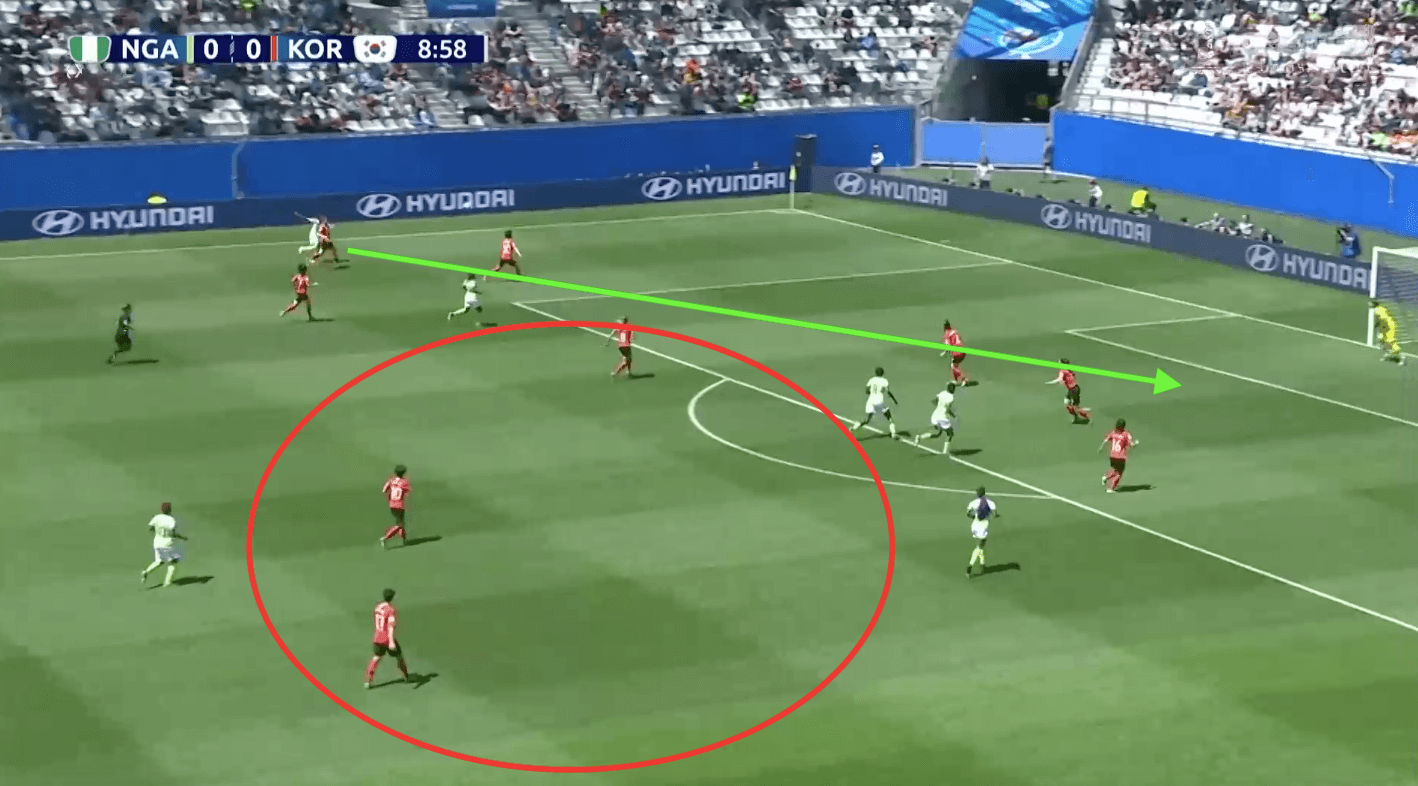
In general, the wide players of Nigeria do not even try to get closer to the opposition goal but put in crosses as early as possible instead.
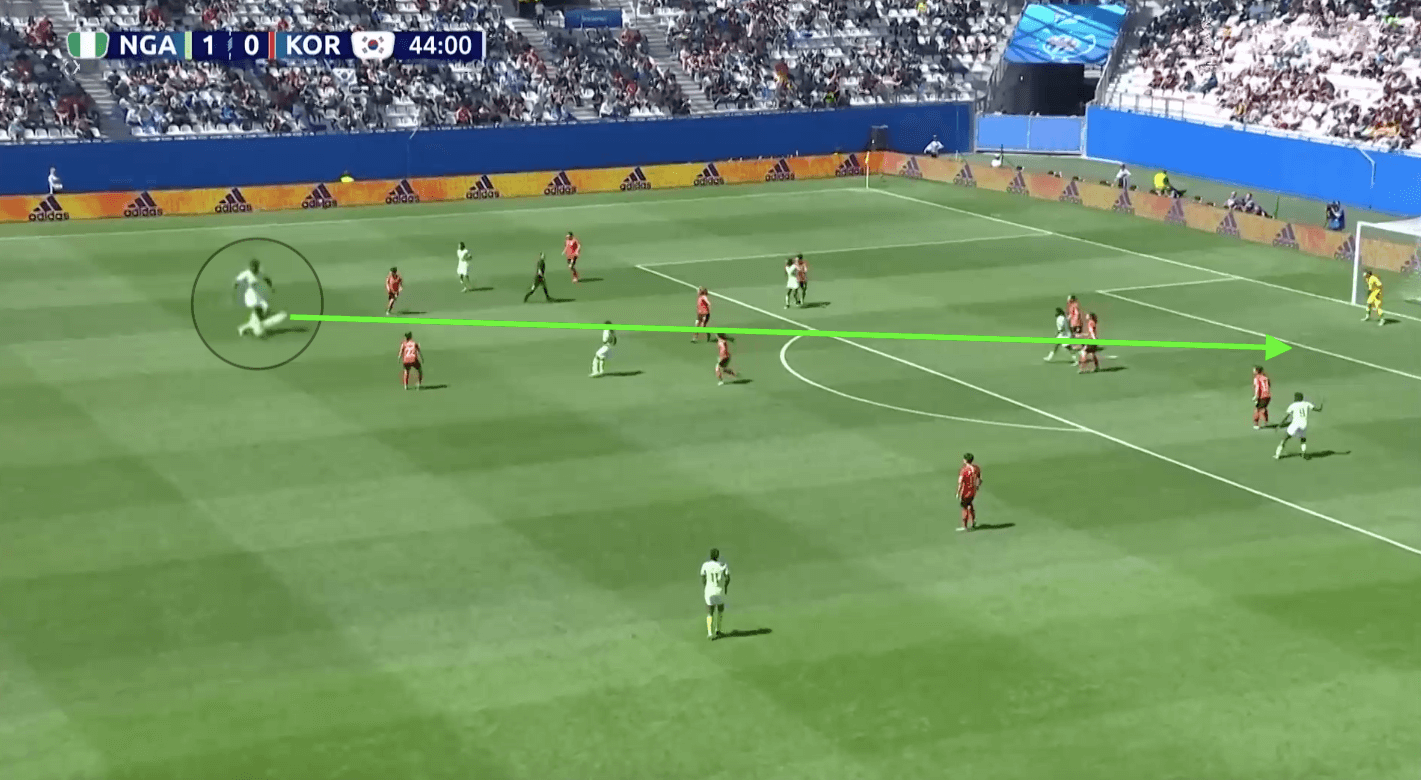
As a consequence, the probability of a successful cross is quite low due to the long distance. Moreover, the longer the ball travels, the easier it is to defend the cross.
To conclude, in order to threaten Germany’s goal from wide areas, Nigeria will need to improve their attacking patterns.
Conclusion
All in all, Nigeria will be a tough nut to crack for the favoured German side. Nigeria’s disciplined defending is hard to overcome. Nevertheless, Germany’s previous game against South Africa spoke for their offensive qualities.
Underdog Nigeria, on the other hand, will need to stem Germany’s threatening attacking play. But at the same time, Dennerby’s side should not act too defensively and keep enough attacking personnel up front in order to counter-attack.
If you are following the FIFA Women’s World Cup 2019 then you will find our FREE tactical preview magazine the perfect compliment to the tournament. You can download it HERE – each nation is previewed and we also profile their key player and young player to watch. Enjoy!

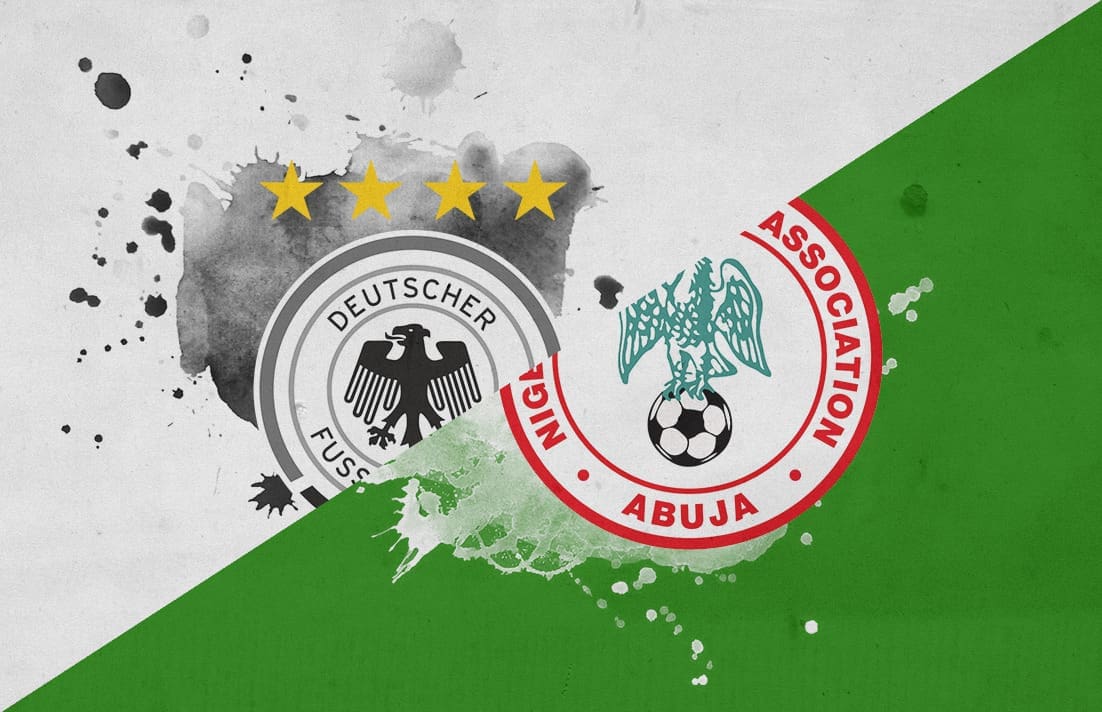



Comments